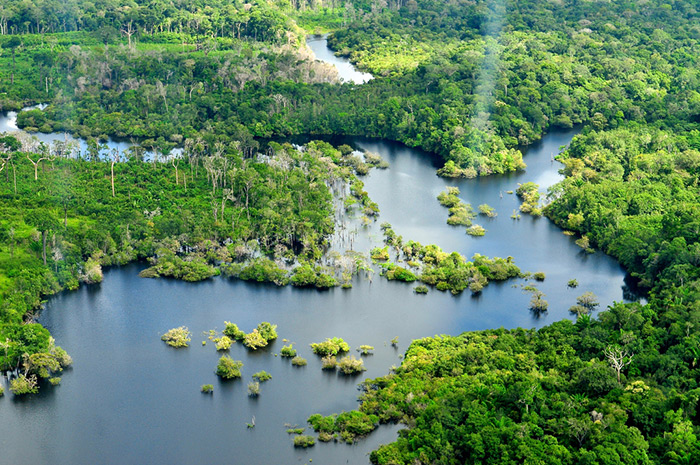Following the massive oil spill in Santa Barbara, California, in 1969, Senator Gaylord Nelson dedicated a national day to honoring the environment. The first Earth Day was celebrated April 22, 1970, as twenty million Americans spoke out about environmental issues. The day resulted in heightened environmental awareness and brought together organizations with common values.
Earth Day is celebrated by over a billion people, the largest day of secular observance in the world. It serves as a call to action, stimulating changes in behavior and policy, and encourages outdoor exploration and engagement. Through education and appreciation of the natural world, future generations will honor, respect, and preserve the planet.
A great way to educate children about the environment is focusing on a parts of the earth that are endangered. The Amazon Rainforest is the largest tropical ecosystem on the planet and the ancestral home to one million Indigenous people and thirty percent of the world’s flora and fauna. However, due to global markets resulting in deforestation and destruction of the rainforest, both people and plants are endangered.

The Wachiperi people of Peru, who were featured at the 2015 Smithsonian Folklife Festival, traditionally live in symbiosis with the Amazon environment. At the start of the twentieth century, external forces resulted in enslavement for international industries and deaths due to smallpox brought by external communities, forcing the Wachiperi out of their land and way of life.
Despite all this, the Wachiperi continue to defend their culture, working on conservation projects with the Amazon Conservation Association. They use music to revitalize their native language and identity, with songs for storytelling and healing. Men maintain practices such as making arrows for fishing and hunting, and women pass on knowledge of plants for food, medicine, and crafts. The Wachiperi offer an abundance of lessons in coexisting respectfully with nature.
How can we help kids understand this respect for nature? They can create their own miniature rainforest—in a jar! Using materials from your own backyard, this activity teaches students about the Amazon and the earth’s water cycle, and it’s an opportunity to introduce kids to organizations such as Amazon Aid and Amazon Conservation Association.
To fully transport children to the Amazon while they create, you can listen to Indian Music of the Upper Amazon from Smithsonian Folkways Recordings while they work. Creating a tangible connection to the Amazon educates youth about this life-sustaining environment, creates compassion for other cultures and lifestyles, and shows youth what they can do to protect the earth.
Making a Miniature Rainforest
Materials
• Rocks
• Potting soil
• Plants (grass, moss, ferns, etc.)
• Jar or other container with a lid
Instructions

Step 1: Fill the bottom of your jar with a layer of rocks.

Step 2: Add on a layer of potting soil, making sure only to fill 1/3 of the jar.

Step 3: Add some clippings of plants, such as grass, moss, clovers, and flowers.

Step 4: Water your rainforest and put the lid on the jar. Place it somewhere in your house that receives sunlight.

Step 5: After some time, you will notice the water cycle beginning as condensation appears at the top of the jar. The water vapor will eventually “rain” back down into the plants (precipitation). The plants soak in the water (transpiration) and then release it (evaporation), repeating the cycle.
Holly Zajur was a research and education intern at the Center for Folklife and Cultural Heritage in the winter of 2016. She holds a degree in global development studies and arts administration from the University of Virginia.
Works Referenced
1) “The History of Earth Day,” Earth Day Network.
2) “About the Amazon,” Amazon Aid Foundation.
3) “Science and Nature for Kids {Make a Rainforest in a Jar},” Hike. Blog. Love. May 9, 2012.


